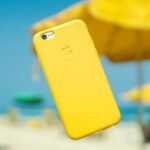The advent of eSIM technology marks a significant evolution in mobile connectivity, transforming the way users interact with their devices and mobile networks. Unlike traditional SIM cards, which are physical cards inserted into a device, eSIMs (embedded SIMs) are integrated directly into the device’s hardware. This innovation allows for a more streamlined and flexible approach to mobile connectivity, enabling users to switch carriers and manage multiple profiles without the need for physical card replacements.
The eSIM technology is not just a minor upgrade; it represents a paradigm shift in how mobile services are delivered and consumed. eSIM technology operates on the GSMA’s specifications, which standardize how devices communicate with mobile networks. This standardization ensures that eSIMs can be used across various devices and carriers, promoting interoperability and ease of use.
As smartphones, tablets, wearables, and other connected devices increasingly adopt eSIM technology, the implications for consumers and businesses alike are profound. The ability to remotely provision and manage mobile subscriptions opens up new avenues for service providers and enhances user experience by simplifying the process of changing carriers or plans.
Key Takeaways
- eSIM technology is a digital SIM card that allows users to activate a cellular plan without a physical SIM card.
- Benefits of eSIM technology include the ability to switch between multiple carriers without changing SIM cards, and the convenience of activating a cellular plan remotely.
- iPhones that support eSIM technology include the iPhone XS, iPhone XS Max, iPhone XR, iPhone 11, iPhone 11 Pro, and iPhone 11 Pro Max.
- Setting up eSIM on supported iPhones involves scanning a QR code or downloading a carrier’s app to activate the cellular plan.
- Comparing eSIM and physical SIM cards, eSIM offers more flexibility and convenience, while physical SIM cards may be more widely compatible with older devices.
Benefits of eSIM Technology
Frequent Travelers Reap the Benefits
This ease of use is particularly advantageous for frequent travelers who may need to switch to local carriers to avoid exorbitant roaming charges. With eSIM, they can quickly access local data plans without the hassle of finding a physical SIM card or visiting a store.
Enhanced Security for Users
Since eSIMs are embedded within the device, they are less susceptible to theft or loss compared to traditional SIM cards. Additionally, eSIMs can be remotely managed, allowing users to deactivate their service if their device is lost or stolen. This feature not only protects personal information but also provides peace of mind for users who rely heavily on their mobile devices for communication and transactions.
Which iPhones Support eSIM Technology?

Apple has been at the forefront of adopting eSIM technology in its devices, starting with the iPhone XS, XS Max, and XR models released in 2018. Since then, all subsequent iPhone models have included support for eSIM functionality. This includes the iPhone 11 series, iPhone 12 series, iPhone 13 series, iPhone 14 series, and the latest iPhone 15 models.
Each of these devices allows users to take advantage of dual SIM capabilities through the combination of a physical SIM card and an eSIM. The integration of eSIM technology into iPhones has been a game-changer for many users, particularly those who travel frequently or require multiple phone numbers for personal and business use. The ability to manage multiple lines from a single device simplifies communication and enhances flexibility.
As Apple continues to innovate and expand its product line, it is likely that future iPhone models will further enhance the capabilities and features associated with eSIM technology.
How to Set Up eSIM on Supported iPhones
| iPhone Model | Supported eSIM | Carrier Compatibility |
|---|---|---|
| iPhone XS | Yes | Most carriers |
| iPhone XR | Yes | Most carriers |
| iPhone 11 | Yes | Most carriers |
| iPhone 12 | Yes | Most carriers |
Setting up an eSIM on supported iPhones is a straightforward process that can be completed in just a few steps. First, users need to ensure that their carrier supports eSIM functionality and that they have obtained an eSIM activation code or QR code from their carrier. Once this is in hand, users can navigate to the “Settings” app on their iPhone, select “Cellular,” and then tap “Add Cellular Plan.” The device will prompt users to scan the QR code provided by their carrier.
Alternatively, some carriers offer apps that allow users to activate their eSIM directly through the app without needing a QR code. After scanning the code or entering the activation details manually, users will be guided through the setup process, which includes labeling their plans (for example, “Personal” or “Business”) and selecting which line to use as the default for calls and messages. Once completed, users can start using their new eSIM plan immediately.
Comparing eSIM and Physical SIM Cards
When comparing eSIMs to traditional physical SIM cards, several key differences emerge that highlight the advantages of eSIM technology. One of the most apparent distinctions is the physicality of SIM cards; traditional SIMs require a slot in the device, which can take up valuable space that could otherwise be used for additional features or components. In contrast, eSIMs are embedded within the device’s motherboard, allowing manufacturers to design sleeker and more compact devices.
Moreover, the flexibility offered by eSIMs is unparalleled. Users can switch between different carriers or plans without needing to visit a store or wait for a new SIM card to arrive by mail. This capability is particularly beneficial in regions where network coverage varies significantly between providers.
Users can easily test different networks to find the best service without being locked into a long-term contract or incurring additional costs associated with physical SIM cards.
eSIM Technology and International Travel

Convenience and Cost Savings
Traditionally, travelers would have to purchase local SIM cards upon arrival in a foreign country or face high roaming charges from their home carrier. With eSIMs, travelers can download local data plans before they even leave home or upon arrival at their destination.
Seamless Connectivity
This capability eliminates the need for physical SIM cards and allows for immediate access to local networks. For instance, if a traveler is heading to Europe, they can research local carriers that offer competitive data plans and download an eSIM profile directly onto their iPhone before departure. This not only saves time but also ensures that they have reliable connectivity as soon as they land.
International Data Plans
Additionally, many carriers now offer international data plans specifically designed for travelers using eSIM technology, making it easier than ever to stay connected without breaking the bank.
eSIM Technology and Dual SIM Capability
The dual SIM capability offered by eSIM technology is one of its most appealing features for many users. With an eSIM-enabled device like recent iPhone models, users can maintain two separate phone numbers on one device—one through a physical SIM card and another through an eSIM profile. This functionality is particularly useful for individuals who want to keep their personal and work numbers separate without carrying two phones.
For example, a business professional might use their physical SIM for work-related calls while utilizing an eSIM for personal communications. This setup allows for seamless switching between lines without needing to carry multiple devices or constantly swap SIM cards. Furthermore, users can easily manage their plans through their device settings, adjusting preferences as needed based on their usage patterns.
eSIM Technology and Network Compatibility
Network compatibility is another critical aspect of eSIM technology that enhances its appeal. Most major carriers around the world have begun adopting eSIM technology, allowing users to choose from a wide range of service providers without being restricted by hardware limitations. This compatibility means that users can easily switch between networks based on coverage quality or pricing without needing to change devices.
In addition to traditional mobile networks, eSIM technology also supports IoT (Internet of Things) devices that require cellular connectivity. As more devices become connected—ranging from smartwatches to home security systems—the ability to utilize eSIMs across various platforms will become increasingly important. This trend indicates that network compatibility will continue to expand as more carriers adopt this technology and as consumer demand for connected devices grows.
eSIM Technology and Data Plans
The introduction of eSIM technology has also led to changes in how data plans are structured and offered by carriers. With traditional SIM cards, users often had limited options when it came to selecting plans based on their needs. However, with the flexibility of eSIMs, carriers are now able to offer more tailored data plans that cater specifically to user preferences.
For instance, some carriers provide short-term data plans designed for travelers who only need connectivity for a few days or weeks while abroad. Others may offer flexible pay-as-you-go options that allow users to adjust their data usage based on real-time needs rather than being locked into fixed monthly contracts. This shift towards more customizable data plans reflects the growing demand for flexibility in mobile services and highlights how eSIM technology is reshaping the telecommunications landscape.
eSIM Technology and Apple Watch Compatibility
Apple has also integrated eSIM technology into its wearable devices, such as the Apple Watch Series 3 and later models that support cellular connectivity. This integration allows users to make calls, send messages, and stream music directly from their watch without needing to have their iPhone nearby. The convenience of having an independent cellular connection on a smartwatch enhances its functionality significantly.
For example, fitness enthusiasts can leave their phones at home while going for a run or workout session while still being able to receive notifications or make emergency calls if needed. The ability to set up an Apple Watch with an eSIM means that users can enjoy all these features without compromising on connectivity or convenience.
Future of eSIM Technology in iPhones
Looking ahead, the future of eSIM technology in iPhones appears promising as advancements continue to unfold in mobile connectivity and telecommunications infrastructure. As 5G networks become more widespread, the integration of eSIMs will likely play a crucial role in optimizing user experiences by enabling faster data speeds and improved network reliability. Moreover, as more devices adopt eSIM technology beyond smartphones—such as laptops, tablets, and IoT devices—the ecosystem surrounding mobile connectivity will continue to evolve.
This expansion could lead to new business models and services that leverage the flexibility of eSIMs, further enhancing user experiences across various platforms. In conclusion, as Apple continues to innovate with its products and services while embracing emerging technologies like eSIMs, consumers can expect even greater convenience and flexibility in how they connect with the world around them. The ongoing development of this technology will undoubtedly shape the future landscape of mobile communications in ways we are only beginning to understand.
If you are interested in learning more about which iPhones support eSIM technology, you can check out the article on GetiPhoneInfo. This website provides detailed information on the latest iPhone models and their features, including eSIM compatibility. Stay informed and make the most out of your iPhone experience by visiting GetiPhoneInfo today.
FAQs
What is eSIM?
eSIM, or embedded SIM, is a digital SIM card that allows you to activate a cellular plan without a physical SIM card. It is embedded directly into the device and can be activated and managed through software.
Which iPhones support eSIM?
As of 2021, the following iPhone models support eSIM: iPhone 11, iPhone 11 Pro, iPhone 11 Pro Max, iPhone SE (2nd generation), iPhone 12, iPhone 12 mini, iPhone 12 Pro, iPhone 12 Pro Max, iPhone 13, iPhone 13 mini, iPhone 13 Pro, and iPhone 13 Pro Max.
Can I use eSIM and a physical SIM card at the same time on an iPhone?
Yes, all the iPhone models that support eSIM also have a physical SIM card slot, allowing you to use both eSIM and a physical SIM card simultaneously.
Can I switch between eSIM and physical SIM card on my iPhone?
Yes, you can switch between eSIM and a physical SIM card on your iPhone. The device allows you to store multiple eSIM profiles and switch between them as needed.
Can I use eSIM for both domestic and international cellular plans?
Yes, eSIM allows you to activate and use both domestic and international cellular plans on your iPhone. This can be particularly useful for travelers who want to easily switch between different plans without needing to physically change SIM cards.










